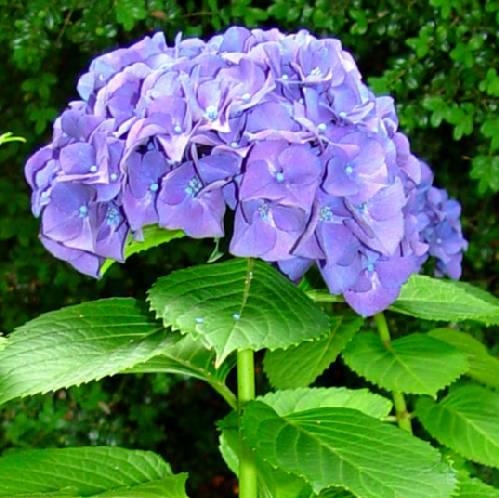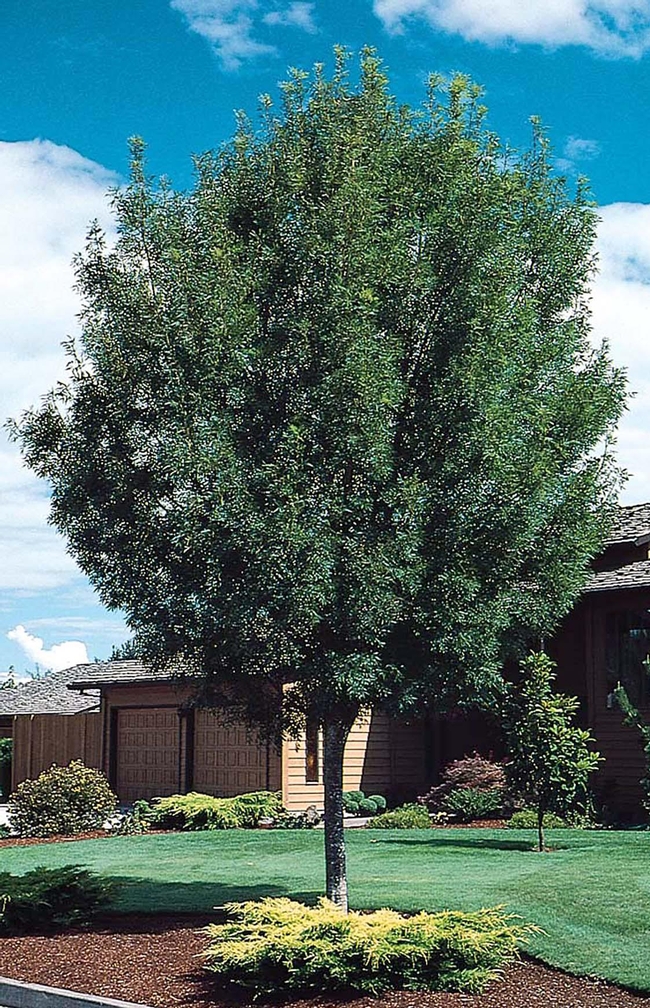The long, lazy days of summer just beg us to come outside and play in the garden. Although there are just four “chores” per month in this article, it is easy to find more to do as we spend extra time outside.
July Ideas
ONE –How often to water trees in the landscape during the summer months is always a question. For a quick reference: Do not water mature, native California oaks. If the whole area under the tree cannot be kept dry, keep the water at least 10 feet from the trunk to avoid root rot. Deep watering only once per month works for mature, drought tolerant trees while a deep irrigation every 14 days is good for mature fruiting and most ornamental trees growing in clay-loam soil. Other types of soil require irrigation more often. Mature citrus trees can go about 10 days between deep irrigations. Potted trees need to be checked daily.
TWO – Plant some flowers near a vegetable patch to attract beneficial insects. Coreopsis, cosmos, goldenrod, marigolds, sunflowers, and yarrow work well for attracting most beneficials. Lady bugs especially enjoy dill, golden marguerite, coriander, and Queen Anne's lace.
THREE – Mophead Hydrangeas(those with the big, round blooms) produce flowers on the previous year's growth – the “old wood.” To shape and control the size of a mature plant (5 years or more) and to avoid cutting off next year's flower buds, prune stems back to 12 inches right after the blooms fade. Fewer, but larger flowers will grow next spring if you cut some of the stems back to the base of the plant.
FOUR – Lawn turning brown? In large areas, it could be an irrigation problem. A quick irrigation auditof the lawn area will help determine if the sprinklers are matched and working properly. Information on checking the output of lawn sprinklers can be found here. Check with your local water provider to see if they are offering partial or complete rebates for changes to efficient sprinklers. In spots with a more defined edge, it could mean a lawn disease or pest problem. Evidence of caterpillars or grubs can be found just under the surface of the green grass right outside of the damaged area. If the brown area is not spreading, treatment to destroy the pests is unnecessary since it will not bring back dead spots and the pest is probably gone. If pest problems persist, investigate what cultural changes could be made to reduce susceptibility in the future.
In August
ONE – Take some time during these dog days of summer to enjoy the landscape and garden while planning a winter garden and deciding on landscape additions. Select seed, gather whatever soil amendments, tools, and irrigation supplies are needed, and find where that perfect plant, shrub, or tree can be purchased.
TWO – Beets, carrots, turnips, and fast-maturing potatoes planted now should yield a crop by Christmas. Beet varieties that do well in our area are those with 60 days or less from seed sowing to maturity (as listed on the seed packet). Carrot lovers might try growing white, yellow, orange-red, or purple varieties from seed. Lee Miller's article, Planning and Planting a Cool Season Vegetable Garden, in the2013 summer issue of the newsletter, provides additional information. Lettuce, kale, and Chinese cabbage planted now will mature for fall salads. Try some heirloom lettuces this year to brighten both gardens and salads.
THREE – Amend soil with compost and soil conditioner before planting. Worm castings, though expensive, are worth the price. Choose pure castings or a mix of castings and compost. Now is also a good time to start a worm bin to provide castings for spring soil amending. Information on worm composting can be found here.
FOUR - Canes of single-crop blackberries and raspberries that have finished fruiting should be cut to the ground. Thin out the new growth. Remove all but 5 to 8 of the strongest blackberry canes and 8 to 12 strong raspberry canes per plant. Wait until after the fall harvest to prune ever-bearing varieties.
September Notes
ONE – Although it seems kind of early to think about spring, now is the time to plant spring blooming bulbs. Bulbs should appear in nurseries right after Labor Day. They are most effective in big flowerpots and in kidney-shaped drifts at the front of garden beds. Some excellent choices include bluebells, daffodils, hyacinth, grape hyacinth, and tulips. Bulbs should bloom beautifully in spring with just rainwater over the fall and winter months.
TWO – Fertilize lawnsto thicken top growth, crowd out weeds, and strengthen grass roots for winter. Combination lawn fertilizers are a good choice. They contain a small amount of fast-release nitrogen for quick greening, and a larger portion of slow-release nitrogen. By using a mulching mower which chops the grass blades into fine pieces and leaves grass clippings on the lawn to decompose and release nitrogen into the turf, one or more lawn feedings per year can be eliminated.
THREE – Set out transplants of campanula, candytuft, catmint, coreopsis, delphinium, dianthus, foxglove, penstemon, phlox, salvia, hollyhock, and yarrow. Replace or plant new shrubs and groundcover, or, plant a tree on the southwest side of the house where it will provide welcome shade during the summer months. Use a deciduous tree for summer shade and winter sun. Chinese hackberry, Chinese pistache, gingko, Japanese pagoda tree, “Raywood” ash, and red oak can be good choices depending on the space available. Note the mature size of the tree before you purchase it to be sure there is ample room for it to grow into the beautiful specimen you expect. Plants send out roots in fall and winter while nature does most of the watering for you. Plants will be well established by the time new growth starts in spring.
FOUR – In case rain is sparse this year, organic mulch applied several inches thick around plants will help keep roots moist. Keep the mulch 3-5 inches from the trunks of plants to avoid problems with rot.
Information for this article has been gathered from:



